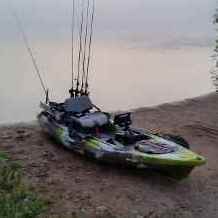I always find it difficult to pinpoint what people mean by "clear" water. Most of the places I fish have visibility to about 10ft, sometimes more, sometimes less. The murkiest water i fish has about 1 foot of visibility: Muddy river, or algae-stained natural lake in late summer. The clearest is probably 20' or so, but hard to tell without systematically measuring it, which I haven't done.
As far as I can tell, the biggest effect of clarity for anglers is that when bass can see farther, the visual things that might spook them -- looming objects, shadows, fast movements -- will do so from farther away; thus, anglers should pay special attention to things like sun and boat/craft position. Avoid casting a shadow where you want to target. Theoretically, visibility first determines whether a bass notices, and is willing to investigate your bait. A big looming shadow may shut down investigation. Any bass you can see, can also see you, and you are more conspicuous than they are, especially when you move -- bass have excellent visual perception of movement; it's probably one of their main hunting skills.
Other factors like bait size, profile, and color (probably in that order) come into play after a bass has committed to investigation, and help determine whether they strike. Water clarity just makes these factors a little more important than they are in murkier water. Most natural prey species for bass are around 4 inches long and have a long, thin shape -- think baitfish or crayfish. So downsizing to, say, a 4" worm rather than a 7"+ worm may occasionally help in clear water. Also, the faster something moves, the less its shape matters, and the more typical the shape, the less it's movement matters. Simply deadsticking a worm, for instance, is famously productive.




